Wrocław is a city in southwestern Poland, serving as the capital of the Lower Silesian Voivodeship and the historical capital of Silesia. Situated on the Oder River in the Silesian Lowlands, it's approximately 40 km from the Sudeten Mountains. As of 2023, Wrocław has a population of 674,132, making it Poland's third-largest city, with a metropolitan area population around 1.25 million.
1 day ago : Wroc?aw Hosts Europa Conference League Final Amidst Fan Clashes and Viral Video
Wroc?aw hosted the Europa Conference League final between Chelsea and Betis. However, the event was marred by clashes involving 32 arrested pseudofans and a scandalous viral video that received one million views.
1900: City Population
In the year 1900 approximately 422,709 people were registered as residents of Wrocław.
1900: Modern Department Stores
Since 1900, modern department stores like Barasch (today "Feniks") or Petersdorff were erected in Breslau.
1900: Breslau Residents
The 1900 census listed 422,709 residents in Breslau.
1903: Devastating flood of the Oder River
In 1903, Wrocław experienced a devastating flood of the Oder river.
1905: Jewish Population in Breslau
In 1905, the Jewish population in Breslau totaled 20,536.
1910: Population Growth in Breslau
By 1910, Breslau's population more than tripled to over half a million since 1860.
1910: Inauguration of landmarks
In 1910, important landmarks were inaugurated in Breslau, including the Kaiser bridge (today Grunwald Bridge) and the Technical University.
1911: Centennial Hall Design
The Centennial Hall in Wrocław was designed by Max Berg between 1911 and 1913.
1911: Design of Centennial Hall
The Centennial Hall was designed by Max Berg between 1911 and 1913.
1912: Alois Alzheimer & William Stern at the University
In 1912, Alois Alzheimer became the head of the university's Department of Psychiatry and William Stern introduced the concept of IQ.
1913: Centennial Hall Exhibition
In 1913, the newly built Centennial Hall housed an exhibition commemorating the 100th anniversary of the German Wars of Liberation and the first award of the Iron Cross.
1913: Design of Centennial Hall
The Centennial Hall was designed by Max Berg between 1911 and 1913.
1919: Capital of Lower Silesia
In 1919, Breslau became the capital of the newly created Prussian Province of Lower Silesia of the Weimar Republic.
August 1920: Destruction of Polish Consulate and School
In August 1920, during the Polish Silesian Uprising, the Polish Consulate and School were destroyed in Breslau.
1921: Polish School Founded
As of 1921, masses in Polish were held at St. Martin's and a Polish School was founded by Helena Adamczewska.
1923: Antisemitic Riots
Antisemitic riots occurred in Breslau in 1923.
1925: City Boundaries Expanded
In 1925, the city boundaries of Breslau were expanded.
1929: WuWa Exhibition Opened
In 1929, the Werkbund opened WuWa (Wohnungs- und Werkraumausstellung), an international showcase of modern architecture, in Breslau.
June 1930: Deutsche Kampfspiele
In June 1930, Breslau hosted the Deutsche Kampfspiele, a sporting event for German athletes.
1932: Nazi Party Support
In 1932, the Nazi Party received 44% of the city's vote in Breslau.
1933: City Population
By 1933, the population of Wrocław was 625,000.
1933: Establishment of KZ Dürrgoy
In 1933, KZ Dürrgoy, one of the first concentration camps in Nazi Germany, was set up in Breslau. Also in 1933 the Gestapo began actions against Polish and Jewish students, Communists, Social Democrats, and trade unionists.
1933: Decrease in Jewish Population
In 1933, the number of Jews remaining in Breslau fell to 10,659.
July 1938: Deutsches Turn-und-Sportfest
From 26 to 31 July 1938, the Deutsches Turn-und-Sportfest (Gym and Sports Festivities) took place in Breslau to commemorate the 125th anniversary of the German Wars of Liberation.
1938: Destruction of Polish Cultural Centre
In 1938, the Nazi-controlled police destroyed the Polish cultural centre in Breslau.
June 1939: Expulsion of Polish Students
In June 1939, Polish students were expelled from the university in Breslau.
September 1939: Mass Arrests of Polish Activists
In September 1939, during the invasion of Poland, the Germans carried out mass arrests of local Polish activists in Breslau.
1939: Religious Demographics
In 1939, of 620,976 inhabitants in Wrocław, 368,464 were Protestants, 193,805 Catholics, 2,135 other Christians and 10,659 Jews.
September 1941: Expulsion of Jews
In September 1941, the city's 10,000 Jews were expelled from their homes in Breslau and soon deported to concentration camps.
1944: Influx of Refugees and Forced Laborers
By 1944, refugees from bombed-out German cities and refugees from farther east swelled Breslau's population, including 51,000 forced labourers.
1944: Breslau Declared a Fortress
In 1944, Adolf Hitler declared Breslau to be a fortress (Festung), to be held at all costs.
January 1945: Attempted Evacuation
In January 1945, an attempted evacuation of Breslau took place, resulting in many deaths due to freezing weather.
January 1945: Evacuation of remaining prisoners to Gross-Rosen
In January 1945, the remaining prisoners of the Gross-Rosen concentration camp in Breslau were evacuated to the main camp of Gross-Rosen.
February 1945: Yalta Conference
Following the Yalta Conference held in February 1945, the terms of the Potsdam Conference decreed that the city would become part of Poland.
February 1945: Soviet Army Approaches
In February 1945, the Soviet Army approached Breslau, and the German Luftwaffe began an airlift to the besieged garrison.
March 1945: Appointment of First Mayor
On March 14, 1945, Bolesław Drobner was appointed as the first mayor of Wrocław after the war.
May 1945: Surrender of Breslau
In May 1945, Breslau surrendered to the Soviet Army, two days before the end of the war in Europe.
1945: Expulsion of German Inhabitants
Between 1945 and 1949, German inhabitants of Breslau were expelled in accordance with the Potsdam Agreement.
1945: End of WWII and Post-War Expulsions
Following the end of the Second World War and post-1945 expulsions of the remaining pre-war population, Wrocław became again predominantly Polish-speaking.
1945: Wrocław becomes part of Poland
In 1945, Wrocław became part of Poland after World War II, following the Siege of Breslau.
1945: Post-War Resettlements
Post-war resettlements from Poland's ethnically and religiously more diverse former eastern territories account for a comparatively large portion of Greek Catholics and Orthodox Christians in Wrocław after 1945.
1945: City's Appearance Shaped by Religious Orders
Until 1945, buildings erected by Catholic orders, starting with the Franciscans in 1610, shaped the city's appearance.
1947: City Population
At the end of 1947, the population of Wrocław was estimated at 224,800 individuals.
1947: Death of Max Berg
Max Berg, the architect of the Centennial Hall, died in 1947.
1948: Recovered Territories Exhibition and World Congress of Intellectuals
In 1948, Wrocław organized the Recovered Territories Exhibition and the World Congress of Intellectuals in Defense of Peace. Picasso's lithograph, La Colombe (The Dove), a traditional, realistic picture of a pigeon, without an olive branch, was created on a napkin at the Monopol Hotel in Wrocław during the World Congress of Intellectuals in Defense of Peace.
1949: Expulsion of German Inhabitants
Between 1945 and 1949, German inhabitants of Breslau were expelled in accordance with the Potsdam Agreement.
1949: Population Resettlement
In 1949, only 20% of the new Polish population of Wrocław were refugees themselves. The Polish population was dramatically increased by the resettlement of Poles, partly due to postwar population transfers during the forced deportations from Polish lands annexed by the Soviet Union in the east region, some of whom came from Lviv (Lwów), Volhynia, and the Vilnius Region.
1954: Establishment of Wrocław Philharmonic
In 1954, the Wrocław Philharmonic was established by Wojciech Dzieduszycki.
February 1956: Lowest Temperature Record
On February 11, 1956, the lowest temperature was recorded in Wrocław (−32 °C (−26 °F)).
1963: EuroBasket 1963 held in Wrocław
EuroBasket 1963 was held in Wrocław.
1963: Declared a Closed City
In 1963, Wrocław was declared a closed city because of a smallpox epidemic.
1963: Closure of German School
In 1963, the city's last pre-war German school was closed.
1977: Śląsk Wrocław won Polish Champion title
In 1977, the Śląsk Wrocław football club became the Polish Champion.
1982: Founding of Fighting Solidarity and Orange Alternative
In 1982, during martial law in Poland, the anti-communist underground organizations Fighting Solidarity and Orange Alternative were founded in Wrocław.
February 1990: PTV Echo begins broadcasting
On February 6, 1990, PTV Echo, the first non-state television station in Poland and in the post-communist countries, began to broadcast in Wrocław.
March 1991: Creation of Districts
On March 21, 1991, the present Wrocław districts (osiedla) were all created.
1991: Abolishment of Boroughs
In 1991, the five boroughs of Wrocław (Old Town, Downtown, Krzyki, Fabryczna, and Psie Pole) were abolished as public administration units.
1994: Old Town listed as National Monument
In 1994, the Old Town of Wrocław was added to Poland's list of National Monuments.
May 1997: 46th International Eucharistic Congress
In May 1997, Wrocław hosted the 46th International Eucharistic Congress.
1999: Creation of Lower Silesian Voivodeship
In 1999, the Lower Silesian Voivodeship, with Wrocław as its capital, was created.
2000: Statistical Report
According to a statistical report from 2000, around 43% of all inhabitants in 1910 were born outside Silesia and migrated into the city.
2000: City Bike Network
Wrocław has a bike rental network called the City Bike (Wrocławski Rower Miejski) with 2000 bicycles and 200 self-service stations.
2005: First appearance of Wrocław's dwarfs
In 2005, the first of Wrocław's dwarfs appeared across the city.
2006: Centennial Hall listed as UNESCO World Heritage Site
In 2006, the Centennial Hall was listed as a UNESCO World Heritage Site.
2006: Centennial Hall UNESCO Heritage
Since 2006, the Centennial Hall is part of the world heritage of UNESCO.
2007: Pastoral Centre for English Speakers
In 2007, the Roman Catholic Archbishop of Wrocław established the Pastoral Centre for English Speakers, which offers Mass and other services.
2007: Educational Ranking
In 2007, the Wprost weekly ranking placed the University of Wrocław fourth among public universities in Poland, Wrocław University of Technology as the best university of technology in Poland, Wrocław University of Economics fifth best among public economic universities, and Wrocław University of Environmental and Life Sciences third best among public agricultural universities.
2009: EuroBasket 2009 and 2009 Women's European Volleyball Championship held in Wrocław
In 2009, EuroBasket 2009 and the 2009 Women's European Volleyball Championship were held in Wrocław.
2010: Flooding
In 2010, a small part of Wrocław was flooded.
2010: Rededication of the White Stork Synagogue
The White Stork Synagogue in Wrocław, completed in 1840, was rededicated in 2010.
2011: 3 million tourists visited Wrocław
In 2011, Wrocław was visited by approximately 3 million tourists.
2011: Publication of Lexicon of the architecture of Wrocław
In 2011, the 1104-page Lexicon of the architecture of Wrocław appeared.
2011: Opening of Municipal Stadium
In 2011, the Municipal Stadium in Wrocław opened.
2011: Population Increase
Since 2011, the population of Wrocław has been steadily rising, with a 0.142% increase between 2019 and 2020, and a 2.167% increase in the years 2011–2020.
2012: Renovation of the Wrocław water node
From 2012 to 2015, the Wrocław water node was renovated and redeveloped to prevent further flooding.
2012: Hosted the 2012 European Football Championship
In 2012, Wrocław hosted the European Football Championship.
2012: Śląsk Wrocław won Polish Champion title
In 2012, the Śląsk Wrocław football club became the Polish Champion.
February 2013: Qatar Airways Customer Service Launch
In February 2013, Qatar Airways launched its Wrocław European Customer Service.
2013: Aging Population
Between 2013 and 2018, the number of seniors in Wrocław surged from 21.5% to 24.2%.
2013: Publication of Lexicon about the greenery of Wrocław
In 2013, a 960-page Lexicon about the greenery of Wrocław appeared.
2013: Polinka Gondola Lift
In 2013, a gondola lift over the Oder called Polinka began operation in Wrocław.
2013: 2013 World Weightlifting Championships held in Wrocław
In 2013, the World Weightlifting Championships were held in Wrocław.
2014: Ordination of Rabbis and Cantors
In 2014, the White Stork Synagogue in Wrocław celebrated its first ordination of four rabbis and three cantors since the Holocaust.
2014: 2014 FIVB Volleyball Men's World Championship held in Wrocław
The 2014 FIVB Volleyball Men's World Championship was held in Wrocław.
March 2015: Wrocław applied to become a UNESCO City of Literature
In March 2015, Wrocław filed an application to become a UNESCO City of Literature.
August 2015: Highest Temperature Record
On August 8, 2015, the highest temperature in Wrocław recognised by IMGW was noted (37.9 °C (100 °F)).
2015: Renovation of the Wrocław water node
From 2012 to 2015, the Wrocław water node was renovated and redeveloped to prevent further flooding.
2015: Opening of the National Forum of Music
In 2015, the National Forum of Music opened, designed by Kurylowicz & Associates.
2016: European Capital of Culture and World Book Capital
In 2016, Wrocław was a European Capital of Culture and the World Book Capital. The city also hosted the Theatre Olympics and the European Film Awards in 2016.
2016: European Capital of Culture
In 2016, Wrocław was declared the European Capital of Culture.
2016: 5 million tourists visited Wrocław
In 2016, Wrocław was visited by approximately 5 million tourists.
2016: Opening of Historical Centrum Zajezdnia
In 2016, the Historical Centrum Zajezdnia museum opened.
2016: 2016 European Men's Handball Championship held in Wrocław
The 2016 European Men's Handball Championship was held in Wrocław.
2017: 2017 World Games
In 2017, Wrocław hosted the 2017 World Games.
2017: World Games 2017 held in Wrocław
In 2017, Wrocław hosted the World Games, a competition in 37 non-Olympic sport disciplines.
2018: Jacek Sutryk becomes mayor
In 2018, Jacek Sutryk became the mayor of Wrocław.
2018: European Best Destination title
In 2018, Wrocław won the European Best Destination title.
2018: Opening of the OP ENHEIM Gallery
In 2018, the OP ENHEIM Gallery opened.
2018: Crude Birth and Mortality Rates
In 2018, the crude birth rate in Wrocław stood at 11.8 and the mortality rate at 11.1 per 1,000 residents; the median age in 2018 was 43 years.
2019: Parking Study
A study in 2019 revealed that there are approximately 130 vehicles per each parking spot in Wrocław, and the search for an unoccupied bay takes on average eight minutes.
2019: Wrocław became a UNESCO City of Literature
In 2019, Wrocław was designated as a UNESCO City of Literature.
2019: Wrocław Airport Passengers
In 2019, over 3.5 million passengers passed through Wrocław Airport, placing it fifth on the list of busiest airports in Poland.
2019: Population Increase
Since 2011, the population of Wrocław has been steadily rising, with a 0.142% increase between 2019 and 2020, and a 2.167% increase in the years 2011–2020.
December 2020: Population Estimate
In December 2020, the population of Wrocław was estimated at 641,928 individuals.
2020: Traffic Congestion Ranking
In early 2020, Wrocław was ranked as the fifth-most congested city in Poland, and 41st in the world.
2021: Ranked 1st by fDi Intelligence
In 2021, Wrocław was ranked 1st among all medium and small cities by fDi Intelligence.
2021: Opening of the Museum of Illusions
In 2021, the Museum of Illusions opened.
2021: Opening of the Odra Centrum
In 2021, the Odra Centrum opened as an educational center on the river, offering workshops, a library, and kayak rentals.
2023: Wrocław Population
In 2023, the official population of Wrocław is 674,132, making it the third-largest city in Poland.
Mentioned in this timeline
Qatar is a country located on the Qatar Peninsula in...
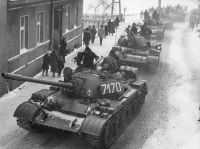
Martial law is the imposition of military rule in place...
The Union of Soviet Socialist Republics USSR existed from to...
World War II - was a global conflict between the...
Germany officially the Federal Republic of Germany is a Central...
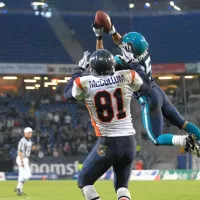
Football is a family of team sports centered around kicking...
Trending

4 days ago OG Anunoby's Former Teammate, Pascal Siakam, Becomes Key for Pacers in NBA Playoffs

2 hours ago NHL experts predict Oilers-Stars Conference Finals, featuring Jason Robertson player props.

2 hours ago Top Gun 3 Plot Progresses: McQuarrie Teases Story; Teller, Cruise, Powell Could Return.
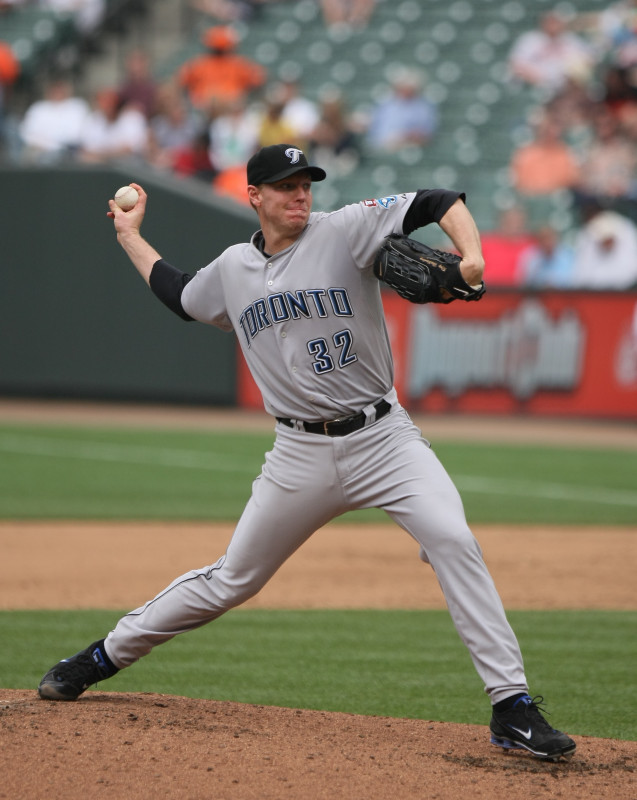
2 hours ago Roy Halladay's impact on Baseball: Comparing eras and celebrating a Blue Jays Legend.
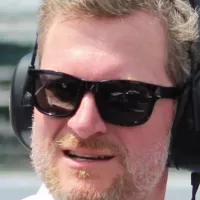
2 hours ago Earnhardt Jr. Reacts, Byron Wins, Chastain's Historic Victory at Charlotte Coca-Cola 600.

2 hours ago Oettinger struggles in Stars' playoff run; team hopes for a turnaround performance.
Popular
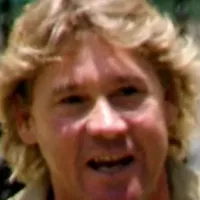
Steve Irwin the Crocodile Hunter was an influential Australian zookeeper...

Cristiano Ronaldo often called CR is a Portuguese professional footballer...

Donald John Trump is an American politician media personality and...

LeBron James nicknamed King James is a professional basketball player...

Jupiter is the fifth and largest planet from the Sun...
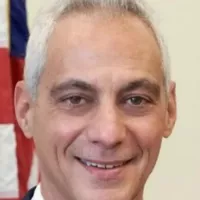
Rahm Emanuel is an American politician and diplomat He served...